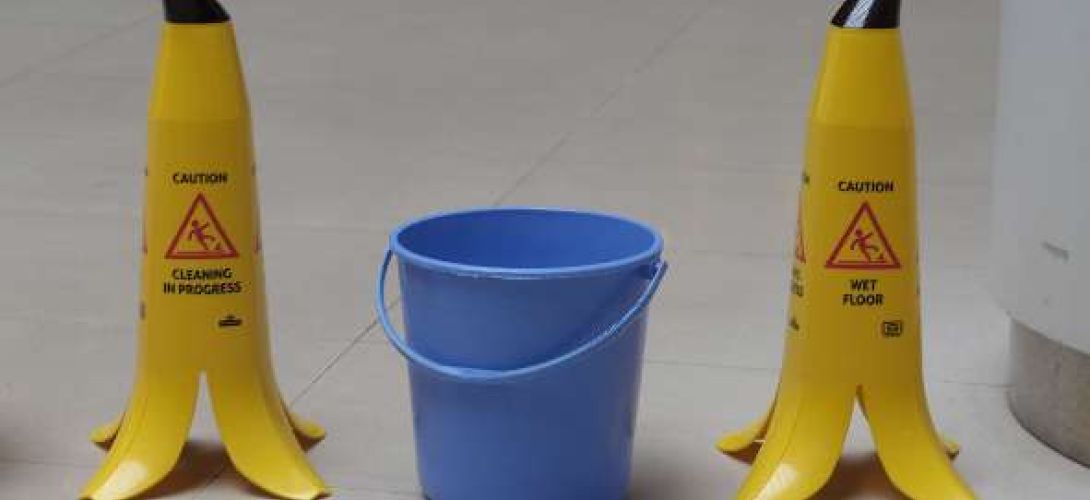
California Cold Air Slip and Fall Safety Training

California Cold Air Slip and Fall Safety Training

If you are a business or property owner in California, it is essential to understand the basics of slip and fall safety and the laws enacted by our state legislature. If someone takes a tumble on your premises, you will be better equipped to handle the situation quickly and effectively.
According to the National Safety Council, slips and falls are the leading cause of death at work, accounting for approximately 21% of all disabling injuries.
When considering workplace falls, most people immediately think of falls from a height, yet according to the Bureau of Labor Statistics (BLS), most fall-related injuries are ground-related (65%). Despite the enacted laws, things are not getting any safer.
Odd as it sounds, cold air slip and fall safety training in California is something employers should consider. Perhaps not so much in SoCal, but other parts of SoCal, like Big Bear and Lake Arrowhead, or even Rancho Palos Verdes Estates, can see their fair share of hail and black ice.
Due to so much road travel time, the perils are increased for people driving for Amazon Prime or Uber. Other less blurred lines between employees and independent contractors can be found among government workers, including police officers on patrol while riding motorcycles.
The first step in preventing slips and falls is ensuring your property is free of hazards and that your employees and customers are prepared to face other dangers outside your direct supervision or control in bad weather.
Winter Weather Means Identifying and Addressing Cold Weather Hazards in Advance
According to the Occupational Safety and Health Administration (OSHA), employers must identify and address hidden risks and perform routine and periodic inspections and maintenance to provide good traction on floor surfaces and protect others.
With all of the recent attention on COVID-19 vaccines, testing, and protection procedures, it’s easy for some industries to overlook other significant risks to employees and their health.
Things Employers Can Do
However, with the colder temperatures and altered hues in specific regions of the country, we have a timely reminder of the importance of thinking outside the pandemic and refreshing our training programs to avoid injury or wrongful death claims from occurring.
Employers and risk management officers should plan and formulate risk mitigation processes early in the season to avoid accidents, especially since lone-worker situations are rising, with no one nearby to help the injured person.
Employee Safety Tips
Employees should be sure of health issues and avoid working under the influence of drugs and alcohol, as they can harm balance in slippery conditions.
You should also wear gloves that enhance your grip so your hands don’t come loose from handrails yet still offer insulation to prevent frostbite, etc. When employees arrive at a building, they should remove as much snow and water from their footwear as possible and be on the lookout for wet or slippery floors.
Carry nothing in your hands. Keep your hands empty to allow your arms freedom to move for support. Backpacks are preferable if you must carry things while walking. On steps, always utilize handrails at entryways and stay clear of known slippery passageways and walking surfaces.
Avoiding workplace fatalities means accounting for potential exposure risks from objects and making areas like stairway platforms safe during inclement weather conditions. (Install liquid absorbent rugs and floor mats, mop up high-traffic locations with controls an average store manager can enforce on your behalf with a covered checklist page, etc.)
Extreme Weather and Icy Surfaces
Aside from the dangerous conditions outside our doors, manufacturers should be aware of hazardous circumstances inside their factories and include that information in employee safety courses. Slip, fall, and accident injuries are still among the most common causes of occupational disease claims, and they can be expensive for businesses in terms of lost productivity, litigation, and OSHA fines.
According to the CDC, more than a million people in the United States suffer from slip, trip, and fall injuries. More than 17,000 individuals die as a result of these injuries. Slip, trip, and fall incidents account for 15% of all work-related injuries that cost between 12 and 15% of all workers’ compensation costs.
The CDC divides falls into two categories: elevated and same level. While same-level falls are more frequent and result in injuries more frequently, elevated falls inflict more significant damage on fewer people. According to the CDC, over 60% of all elevation falls occur from a height of less than 10 feet.
OSHA inspects the reasons behind work-related falls to prevent future slips on greasy or wet surfaces. However, the most prevalent problem is the presence of unprotected sides and edges where someone can fall from a higher level. Working surfaces must be cleaned regularly to comply with OSHA regulations, and walking-working surfaces must be free of hazards.
In addition, OSHA requires that slips, trips, and falls be identified and addressed quickly and that employers conduct frequent and periodic inspections of their workplaces’ walking work surfaces.
Also crucial, training is required to teach workers how to detect the dangers of falling and the procedures for avoiding them, including the use of personal fall protection and appropriate ladder climbing. With that in mind, here are some of the most frequent topics and teaching methods for educating employees on preventing falls.
Improve General Employee Awareness of Their Surroundings
Every worker has fallen asleep at work on occasion. Whether they’re daydreaming or simply not paying attention, this is when they lose sight of the inherent dangers around them, especially slips, trips, and falls.
For example, a worker might ignore wet surfaces even if signs in the workplace notify them that floors have recently been cleaned. They may also not utilize the handrail or climb more than one stair at a time when using the stairs.
Many people are unaware that many injuries occur due to little, unintentional blunders. You may prevent these situations by including them in your continuing safety education.
Consider requiring employees to learn how to identify and prevent hazards and how to report them. Also, a behavior-based safety program that encourages employees to act to reduce their risk exposure should be implemented.
Teach the Proper Use of Fall Prevention Equipment
Employees should have immediate access to fall prevention tools such as harnesses, safety lines, and hard helmets. The tough part is getting them to utilize them. It’s not just about how to put on the equipment; it’s also about thinking ahead and using it to ensure protection.
Before climbing, they should know how far the extension equipment will reach before attempting to reach a particular height.
- Do they understand how to use the equipment after they’ve been chosen?
- Do they know how to utilize it correctly?
- Are there any established procedures to ensure equipment is inspected before use?
Cut the Horseplay During Extreme Weather
It’s one thing to have a good time at work but another thing entirely when it puts people in danger. You can prevent this hazard by adopting a zero-tolerance approach to horseplay at work. That includes no running, skipping, pushing, playing ball, or roughhousing at work. What is horseplay? You’ll be better off with procedures in place.
Create A Safe Walk to and from Workplace Parking Lots
Between where employees leave their cars and enter the building, a lot can happen. Ensure that walkways, including sanding or de-icing, are free of water, ice, or snow. Also, educate staff on locations where slippery surfaces might form. Take care to check for uneven pathways or anything that may trip workers while they’re
Teach Employee Ladder Safety Courses
OSHA has several regulations regarding ladder safety. If unattended, ladders are a frequent source of inspections and injuries. In addition to instructing staff how to use ladders safely, you must check them for safety regularly.
Ladders can become slippery if not cleaned and, in some cases, wear down and break if they aren’t maintained. There’s also the issue of instructing employees on choosing the appropriate ladder for the task.
As you prepare for the winter, take some time to update your training methods and documents to address slips, trips, and falls. Use the temperature decrease as an at-work safety reminder to refresh your training.
Conclusion
As you can see, keeping safe during winter weather means having health and safety awareness. Workplace injuries from workplace falls can increase when employers don’t clean floors or take other basic safety steps. Weather conditions and gravity are not all we need to worry about. To prevent slips or falls, follow a basic dress code that accounts for the places you will travel.
For example, consider innovative winter footwear and other clothing. Don’t assume your boss will regularly clear the floor surface of melted liquids in slippery areas. You can also ask the janitor to help clean up, as this can help prevent many accidents, especially at elevated heights.
Schedule a Free Consultation With a Workplace Fall Accident Lawyer Today
Clear snow and walk slowly as you ingress and egress in ice or rainy, extreme weather conditions. We hope this guide was a helpful start and caught your eye.
Want to learn more about your rights to recover compensation as a slip-and-fall accident victim? If you suffered a slip and fall case and need a Los Angeles slip, trip, and fall attorney, contact us at (833) LETS-SUE.
Categories

Michael Ehline
Michael Ehline is an inactive U.S. Marine and world famous legal historian. Michael helped draft the Cruise Ship Safety Act and has won some of the largest motorcycle accident settlements in U.S. History. Together with his legal team, Michael and the Ehline Law Firm collect damages on behalf of clients. We pride ourselves in being available to answer your most pressing and difficult questions 24/7. We are proud sponsors of the Paul Ehline Memorial Motorcycle Ride, and a Service Disabled Veteran Operated Business. (SDVOB.) We are ready to fight.
Go here for More Verdicts and Settlements
